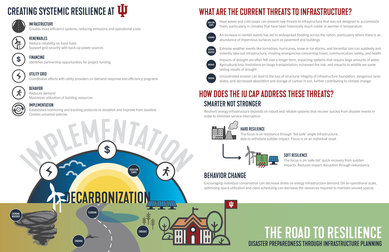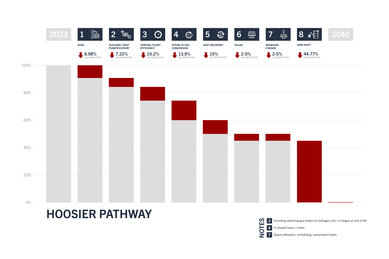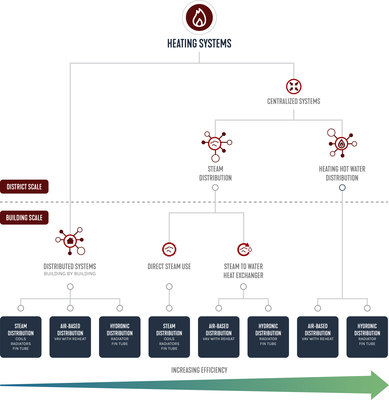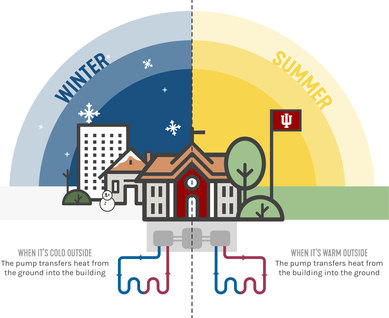Indiana University Climate Action Plan
Provided with comprehensive metrics on projected energy use and a detailed analysis on how it can reduce carbon emissions, Indiana University has a clear path forward to a more resilient energy future.
Client
Indiana University
Location
Bloomington, Indiana
Markets/Services
Higher Education, Energy & Environmental Modeling, Sustainable Design, Campus Planning, Green Infrastructure

Indiana University, with two core and five regional campuses encompassing more than 3,600 acres across the state, has long been a leader in environmental stewardship and sustainable policies. In Spring 2022, IU President Pamela Whitten established a Climate Action Planning Committee challenged to develop a plan for the university, with initiatives and strategies to mitigate the impacts of climate change and create a more sustainable future. Following preliminary research, the committee partnered with SmithGroup for its expertise in energy strategy.
SmithGroup’s Performance Analytics and Climate-Impact Team (PACT) worked closely with IU to create an evidence-based and action-oriented plan to meet the university’s bold targets for reducing greenhouse gas emissions. The plan transitions the university to cleaner energy sources by establishing a pathway for carbon neutrality across all seven IU campuses by 2040. The goal is transformative—the equivalent of taking 2 million passenger cars off the road annually.

The project began with on-site qualitative research including engaging with and understanding the concerns of IU students, faculty, and staff via a series of forums held on each campus. Suggestions and comments from these in-person forums along with feedback received during two online events and via email helped the committee assess the IU community’s priorities and concerns. The forums also allowed the committee to share preliminary methods under consideration to achieve decarbonization. While the State of Indiana’s energy grid transitions to more renewable energy sources through infrastructure updates, the university will continue to partner directly with utility providers and the State of Indiana to foster energy supply-side innovation. The university will also continue to prioritize funding for repair and rehabilitation projects that help reduce IU’s carbon footprint while also providing long term operational savings that can be reinvested in further improvements.
Quantitative work began next. Using baseline energy consumption data for IU's building stock, the team developed a dynamic forecasting platform that could project utility consumption in response to the impacts of building improvements, passive decarbonization through state-level grid shift, rising temperatures and even space utilization. It soon became apparent that behavioral changes and quantified energy conservation measures would not be enough to achieve carbon neutrality. IU needed to find alternatives for the primary natural gas and emergency backup coal boilers at its Bloomington campus central plant, as well as for electricity from the grid, both of which accounted for approximately 40 percent of the university’s carbon emissions. Using the PACT forecasting platform, the team determined it could make up that 40 percent by shifting from steam to a hot-water heating system, incorporating waste heat recovery, and potentially adding solar installations to reach net zero.

The real-time data and modeling SmithGroup supplied proved invaluable for moving the Climate Action Plan forward. Decisionmakers could see the benefits of making investments in campus infrastructure including that decarbonizing buildings is a financially responsible step in protecting the university from the impacts of climate change. Not only was the final Climate Action Plan approved, but the university also established an energy fund earmarked for decarbonization investments. As it embarks on its path toward carbon neutrality, Indiana University has demonstrated its commitment to bold climate action for the greater good.

